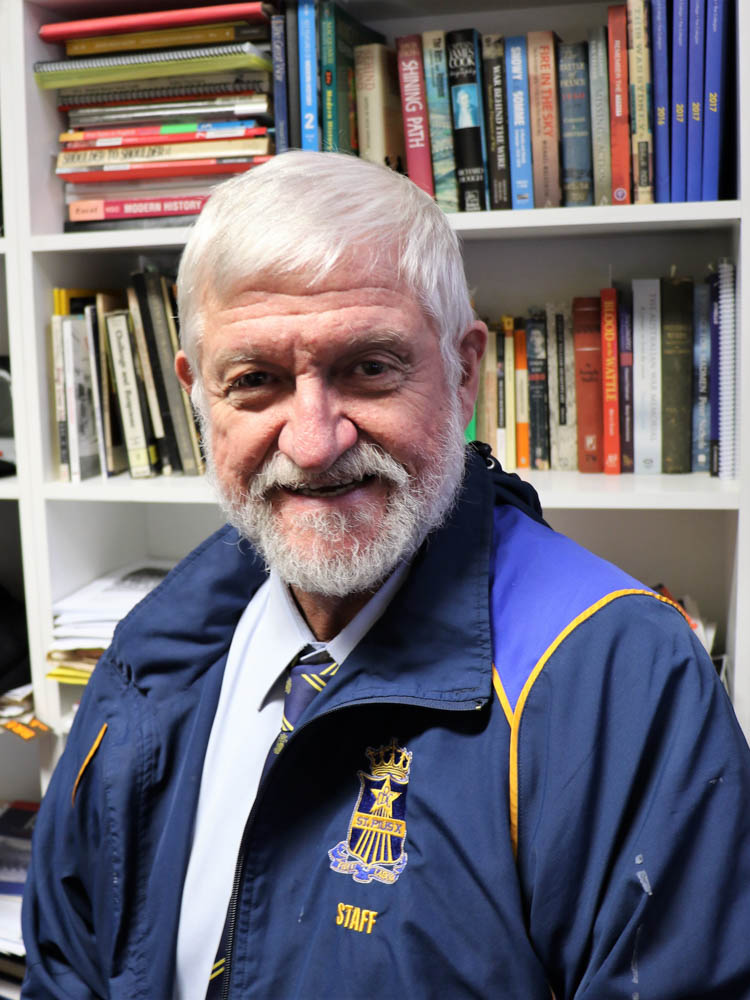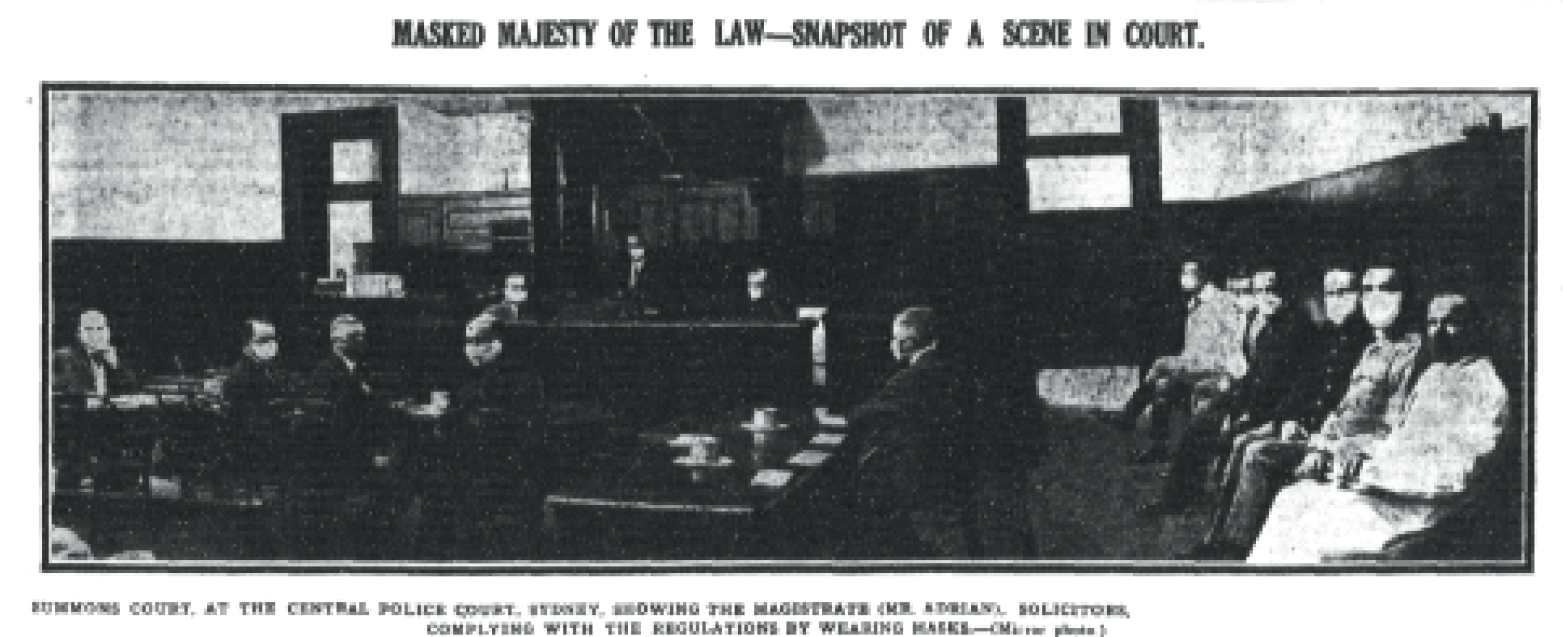The 1918–20 influenza pandemic and the New South Wales legal profession

On 12 November 1918 the Supreme Court of New South Wales held a service in the Banco Court, on King Street, to commemorate the end of the First World War.1 The chief justice, Sir William Cullen, spoke of men ‘cheerfully’ laying down their lives in the cause of honour and justice. Mr A M Hemsley spoke on behalf of the solicitors and mentioned the divine intervention of the Angel of Mons to show some form of celestial justice for the Holy enterprise against barbarism. New South Wales barristers, which included in their current or past lists Prime Minister William Morris Hughes, Premier William Holman and the future official historian, C E W Bean, enthusiastically threw themselves into what they saw as a spiritual enterprise. Yet, on that day in 1918, the chief justice, his fellow judges, the attorney-general and senior lawyers present at the service were little aware of a looming scourge: an influenza pandemic that would eventually claim more lives than the war that spawned it. Within a week of the war’s end, it would take the life of one of their own.

Initially, the strange new influenza was associated with unsanitary conditions on the battlefield, crowded military camps and a condition known as ‘trench fever’. Unlike the illness’s usual winter virulence, it affected people in the European summer. By mid-July 1918 it was reported that influenza was spreading rapidly in English towns. Half the employees in some factories and business places were incapacitated. There were thousands of cases in London. Ominously, the reports also said ‘(t)here is no known remedy for the disease.’2

Barristers serving on the Western Front referred to the flu in numerous letters throughout the war. Cecil Hope Cohen, younger son of the late Justice Cohen, was serving in Europe and contracted influenza in November 1918. An associate to Justice Street, Cecil had been admitted to the Bar on 21 November 1913. He left Sydney in January 1916, becoming a lieutenant in the Royal Field Artillery. He was engaged on active service for some months in Flanders, then invalided to England, suffering shell shock. After recovering he returned to his military duties but died of pneumonia on 18 November 1918 at the military hospital in Catterick. Other Sydney barristers overseas at that time, including Roderick Kidston, Edy Little and Herbert Fraser Watson, were recovering from the illness. William Hartland Cullen, a son of Chief Justice Cullen, was similarly affected at the time. Barrister-soldiers who survived influenza included Rex Chambers, Thomas O’Mara, John Neild, Cecil Lucas and Alroy Cohen.

As would be the case just over 100 years later, 1919 started with bushfires in the Sydney region, an ebb and flow of panic over the spread of influenza, new regulations and a bitter split between the judiciary and the State Government over the wearing of face masks (see accompanying article by Villa SC, 'The wearing of masks during the Spanish Flu'). On 28 January 1919 a proclamation was issued after a special meeting of the Executive Council which closed libraries, theatres, churches, places of indoor entertainment, public halls and schools.3 Ships were quarantined and fumigated in the harbour while the Water Police Court and the Hyde Park Recruiting Depot were transformed into inoculation stations.
The influenza also impacted upon the operation of courts. In June 1919, because of influenza, a jury which had not reached its verdict was sent home. On 3 July 1919, Judge Bevan returned to Sydney after presiding over courts at Young, Grenfell, and Cowra and found his wife ill with the disease. No nurses were available, so Judge Bevan had to remove himself from duty to care for his wife.
During 1919 there were a number of flu deaths associated with the Bar. George Martin of Selborne Chambers was the youngest son of former Chief Justice Sir James Martin. He passed away in April 1919. His brother had been killed in the war only a year before – although the family had to wait for months for confirmation of his loss. The following mention was made in the press:
Before entering upon the business of the District Court yesterday Judge Backhouse referred to the death of Mr. George T. Martin, which, he said, came as a shock. A week ago he appeared in that court, apparently in his normal state of health. A few days after, they heard he was dead. . . The late Mr. Martin had been briefed in one of the cases listed before his Honor, and when the matter was called on, it was mentioned that one of the instructing solicitors was suffering from influenza. It therefore became necessary to adjourn the case.4
Another barrister to die from influenza was George Long Innes, son of a former Supreme Court judge, Sir Joseph George Long Innes. George Innes was the parliamentary draftsman and described as ‘one of the best known men in the State’. He died barely a week after contracting influenza at the first rugby game between New South Wales and New Zealand. Dr Francis Gellatly who was in the Commonwealth Institute of Science and Industry was admitted to the Bar in 1912 but did not practise. He died of the flu in late September 1919.

The influenza epidemic and interruptions to daily life continued against the backdrop of recovery from the war. Schools celebrated Empire Day on 24 May 1919. The flag was unfurled and saluted; cheers were given for the King, with choruses of Rule Britannia, Flag of Britain and God Bless the Prince of Wales. Captain C E W Bean, former New South Wales barrister and official war correspondent,5 composed a special schools address. He wrote of the men who had lost their lives in action, exhorting students to ‘devot(e) our lives to making this country the happy, great and generous land whose future with their death they gave into our hands’.
By the end of 1919, the influenza pandemic had largely run its course in Australia. The pandemic marked the end of a spiritual and logistical enterprise that had commenced with such grand ideals only a few years before. It has taken the recent COVID-19 outbreak to remind people that a hundred years ago, masks, border restrictions and government proclamations had been commonplace for some months in New South Wales.
1919 started with bushfires in the Sydney region ... and a bitter split between the judiciary and the State Government over the wearing of face masks
ENDNOTES
1 Tony Cunneen is head of publications at St Pius X College and a member of the Francis Forbes Society for Australian Legal History; acunneen@bigpond.net.au The author wishes to acknowledge the great assistance by Juliette Brodsky in the preparation of this article.
2 ‘Influenza’, Sydney Morning Herald, 2 July 1918, p 7.
3 ‘Closed by Proclamation’. Sydney Morning Herald, 29 January 1919, p.11.
4 ‘The late Mr Martin: Tributes from both Bench and Bar’, Telegraph 23 April 1919, p. 9.
5 Later Official War Historian.